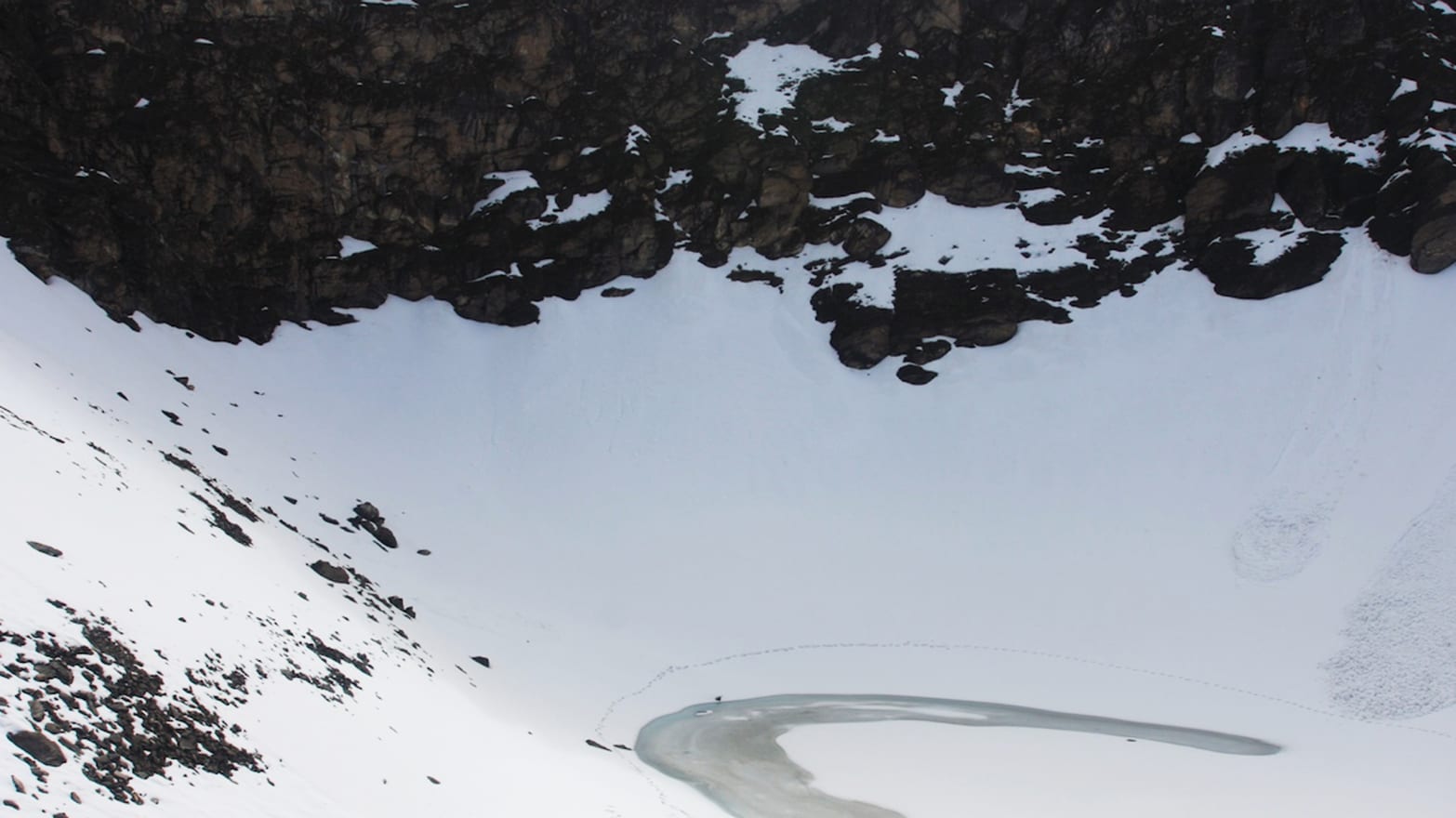INDIA, July 11, 2017 (Daily Beast): For one month a year, the icy waters of Roopkund Lake melt enough to reveal scattered skeletal remains of 200 humans who perished in the region 1,200 years ago. Because of the harsh conditions of the remote lake, nestled 15,750 feet in the Himalayan mountains of India bordering Nepal and only accessible via a five-day ascending trek, scientists estimate there could still be 400 undiscovered bodies. This grisly find was “first uncovered” [though well known to locals] by a British forest ranger in 1942, and immediately inspired legends to explain the identities of the mysterious group of dead trekkers. For decades, their cause of death remained unsolved. But a half century later, DNA testing of the bones discovered something even more unbelievable.
Analysis showed that the bones belonged to two separate groups traveling together who were killed by giant blows to their heads and shoulders. Cause of death? Massive hail and nowhere to hide. It wasn’t until 2004 that a proper investigation into the deaths began, and the mysterious remains were revealed to the world. A team of scientists concluded that the party, which was comprised of a related tribe of pilgrims and another group, probably porters hired to carry their luggage, died when a storm hailed down ice balls measuring nine inches in diameter. “The only plausible explanation for so many people sustaining such similar injuries at the same time is something that fell from the sky,” one of the researchers said.

